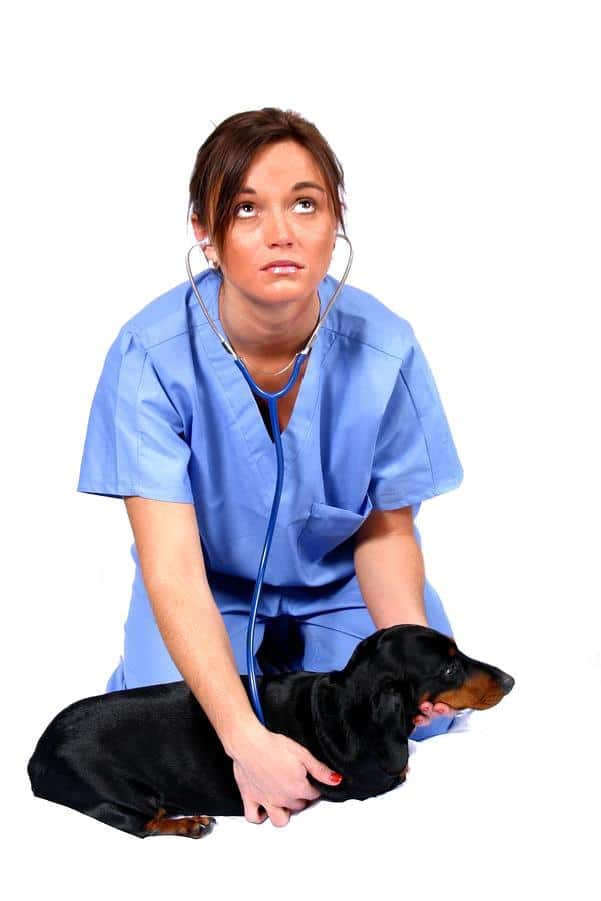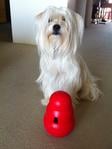Coprophagic behaviour with dogs
You don’t really want to read this! Dogs really do some revolting things occasionally but when your dog eats its own droppings, it can really make your stomach turn – especially when it wants to come and greet you afterwards with that oh-so-lovely Fetid Fido grin.
I am sure you do not want any more gory details, but some dogs eat their droppings when their produce has matured on the ground for a little while. Some eat them while they are factory fresh and steaming and others prefer the offerings of other animals, especially cattle, horses, cats and kangaroos.
Just to prove there is a word for everything – the term for this charming behaviour is coprophagia.
What are the solutions?
Firstly, ensure your dog has no medical reason for its wayward behaviours. Ask your veterinarian to test your dog’s stool for parasites of any type. Your veterinarian may also wish to test the functioning of your dog’s pancreas.
Put Pooch onto a highly digestible and nutritionally balanced diet to eliminate any chance that a dietary problem is the cause.
The digestibility will ensure that it can extract as many nutrients as possible from the food presented and will reduce the volume of faeces produced.
The faeces will also be consistent in form and nature. Lastly, such a diet will ensure that no dietary deficiency is causing the coprophagia.
If your dog has a dietary allergy causing bowel irritation, then this may lead to coprophagia too. Therefore, to normalise bowel function even further, it is also a good idea to feed your dog a restricted protein or hypoallergenic diet. These diets contain protein sources that are not commonly used in dog food.
A suitable diet to achieve all the above is available from your veterinarian.

Behavioural Remedies
Having eliminated any medical cause, now turn to behavioural therapy.
Bored dogs that live in small backyards and have dull lifestyles often practice coprophagia. Such dogs need the No Bored Dogs Routine technique to blow away boredom.
To keep a dog on its toes and to provide brain work, a Kong Toy is perfect. These pyramid shaped balls bounce unpredictably and are great for aerobic exercise.

When you have finished playing with your dog, you can place some food treats in the hole in the middle of the Kong and leave it with your dog. Pooch will then spend quite some time exercising its brain and working out how to get the food out of the hole.
Training the dog not to eat its own produce, or those of others, can be done in a variety of ways, but, how can you train the dog if you do not know when it is going to gobble the googlies?
Try to make the passage of your dog’s own googlies more predictable.
Generally your dog will want to soil within an hour or so of eating. If possible, restrict it to one meal a day. Conveniently time the meal so that an hour afterwards you can watch the dog closely. Perhaps you will need to keep the dog inside the house so that you will know when it wants to go out.
Try to catch the soiling behaviour so that you can either praise the leaving-it-where-it-is behaviour or softly discipline the google-gobbling behaviour
When motions are produced, praise the leaving behaviour. Use a technique I call the A Good Dog Routine for this. Wait till your dog passes its offering, then,in a kind voice say ‘leave’. Wait for about five seconds, and if Pooch does ‘leave it’ call him or her to you and liberally praise this sequence of good behaviours.
The above method is the preferable one. However, occasionally, disciplining googly gobbling is necessary. The method is similar to the last but with a different emphasis. It is a process I call the ABad Dog, Good Dog Routine.
Timing is critical. Wait until Pooch goes to take a mouthful. Then, in a very stern voice, shout ‘Leave’. The voice should be as sudden as a gun shot and be stern enough to distract and punish the dog. Wait for five seconds to see if you have had effect. Call the dog to you, make it Sit and Stay, and then praise this alternative good dog behaviour.

Usually, the ‘Bad Dog Good Dog Routine’ is replaced in time with the ‘Good Dog Routine’ as the dog learns and punishment is no longer needed.
A process I call the ‘Stool Pigeon’ approach can be tried too. This is a form of ‘self-discipline’. Leave a tasty-looking stool in an obvious spot but cover the stool with a hot sauce or a bittering spray such as Bitravet (available from veterinary surgeons). It is even better if the sauce or Bitravet is injected into the stool so your dog cannot smell the additives.
Lastly, a product called Wild Forage (available from our office) is also useful. When added to the dog’s diet this often helps to control coprophagia.
A Last Word
Some forms of coprophagia are a true complusive behaviour. If such is the case you are unlikely to solve the problem on your own. Contact us for professional help.
